17 cars that were resurrected, for better or for worse
This story originally appeared on Hagerty Media in October of 2019. It is reproduced here with minor changes for timeliness.
Over the last 20 years, the auto industry has gotten into the habit of digging up its cold, dead nameplates and reintroducing modern versions of cars it killed off long ago, probably for reasons long forgotten. It seems to have begun with the reimagination of the Volkswagen Beetle back in 1998 and the reinvention of Mini by BMW in 2000.
Recent efforts have been a mixed bag. On the sports car side of things, we got the Toyota Supra and a new Nissan Z. SUVs were also a popular category, from the Jeep Gladiator to the Ford Bronco to the Land Rover Defender. Some popular models came back a little different than what we like to remember. Chevy exhumed Blazer for a sporty-looking crossover, not the Wrangler fighter we were hoping for. The Grand Wagoneer reemerged as a six-figure behemoth clearly aimed at blacktop, not backroads.
and the fact that Jeep is also working on a new Grand Wagoneer.
Here are 17 classic nameplates that have come back from the dead. There are others, but these are some of the best, along with a couple of losers.
Acura NSX
20180911153111)
Honda stunned the world in 1991 when it launched the first-generation NSX supercar. Sold in America as the Acura NSX, the mid-engine machine was a technological tour de force, with an aluminum structure and body, a 270-horsepower all-aluminum DOHC VTEC V-6 with an 8500 rpm redline, and titanium connecting rods. It was as fast as a Ferrari and as civilized as an Accord. Production lasted until 2005. In 2017, the Acura NSX returned as an all-wheel-drive hybrid. Power comes from a twin-turbo V-6 combined with three electric motors and a battery pack to produce a total of 573 hp. Unfortunately, sales have been slow, and through the first seven months of this year, Acura has sold just 161 NSXs.
Chevy Blazer

From 1969–93, Chevy’s K5 Blazer was a brutish but civilized full-size SUV based on the underpinnings of the brand’s popular pickup. In 1994, the truck grew into a four-door and it was renamed the Tahoe. Chevy also used the Blazer name on the smaller S-10 Blazer, which was based on the S-10 compact pickup. That vehicle morphed into the Trailblazer in 2002, which was laid to rest with the introduction of the Traverse in 2009. And now the Blazer is back for 2019, only it has no connection to the original K5. Instead, it has become a car-based crossover with about as much off-road capability as a Camaro. It even shares some of the Camaro’s design inside and out. Although all-wheel drive is available, Chevy calls the new Blazer “street-inspired.” We call it a missed opportunity.
Chevy Camaro

In 2002, after 35 years of continuous production and four generations, Chevy built its last Camaro. Or so we thought. It came back in 2010, emulating the design of the muscle cars first generation, produced from 1967–69. It was a response to the new retro design of the 2005 Ford Mustang and the recreation of the Dodge Challenger, which launched in 2008. Chevy even dug through its archives and relaunched many classic Camaro models, including the RS, SS, Z/28 and COPO. Today, the new mid-engine C8 Corvette is grabbing all the headlines, but the Camaro’s sixth generation, launched in 2016, remains in production.
Dodge Challenger

Let’s forget that Dodge sold a front-wheel-drive version of the Challenger, based on the Mitsubishi Galant, from 1978–83. The original Challenger, sold from 1970–74, is the one that really matters. It shared its platform with the Plymouth Barracuda, and its R/T models were powered by legendary V-8s, including the 440 Six-Pack and the 426 Hemi. Dodge launched a modern interpretation of that iconic muscle machine in 2008, with the R/T returning in 2009. Today’s Challenger not only remains in production, but its supercharged Hellcat and Demon models reign supreme as the quickest and most powerful American muscle cars ever.
Dodge Charger
20190814174802)
First introduced in 1966, the Dodge Charger remained in continuous production through 1978 and four generations. A front-wheel-drive K-car-based version appeared from 1982–87, highlighted by the turbocharged Shelby model, but then the Charger went away for nearly two decades. It was reinvented in 2006 as a rear-wheel drive four-door sedan, using the platform that would also be used for the Challenger two years later. The extra doors were quite controversial, but there was an R/T model with a Hemi V-8 under the hood. Now in its seventh generation, the Charger shares its supercharged Hellcat Hemi with over 700 hp with the Challenger, making it the most powerful American sedan in history.
Fiat 500

Iconically cute, the original Fiat 500, or Cinquecento, was built from 1957–75. It was a tiny, economical, and affordable city car with an air-cooled engine mounted in the back, just like the Volkswagen Beetle. Nearly 4,000,000 were produced, but the 500 was never sold in the United States. With the successful return of the Beetle and the Mini, Fiat went back in time and relaunched a modern version of the 500 in 2007. Now front-engined with front-wheel drive, it was significantly larger than its namesake, but it captured the look of the original perfectly and became very popular in Europe. Fiat returned to the U.S. market in 2011, bringing the 500 to America for the first time. Today, it offers a turbocharged Abarth model, reintroducing another classic nameplate, as well as an electric version. However, it will be discontinued again after this model year.
Ford Bronco
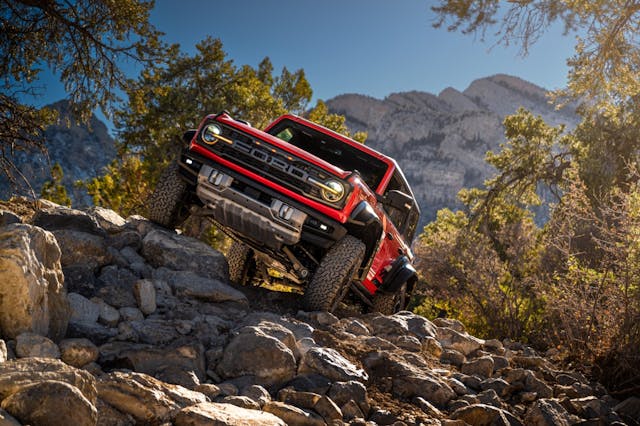
First-generation Ford Broncos, built from 1966–77, have been pegging the popularity meter with collectors for nearly a decade, and consequently their values continue to rise. In 1978, the two-door SUV went full-size to better battle Chevy’s Blazer, and it remained in that configuration for five generations, with production ending in 1996. Ford also produced the smaller Bronco II from 1984–90, and although it was successful, it never really captured the magic of the original. Ford unveiled the Bronco Concept 14 years later at the Detroit Auto Show, and it has been teasing us with the SUV’s return ever since. Well, it’s finally about to happen. The 2020 Ford Bronco will be based on the Ford Ranger pickup’s ladder frame and is promised to offer true off-road capability. We hope it’s a true competitor for the Jeep Wrangler.
Ford Shelby Mustang GT350/GT500
20190515130127)
Ford turned back the clock in 2007, reintroducing the Shelby GT500 Mustang, a model that hadn’t seen production since 1970. The new version was supercharged and packing 500 hp, making it the most powerful factory Mustang ever. There have been a couple of iterations since; the most recent was the 2013–14 model with 662 hp. Well, here comes another. The 2020 Shelby GT500 will be packing a 760-hp supercharged 5.2-liter V-8 and a dual-clutch automatic gearbox.
Ford let the Shelby GT350 name lie dormant quite a bit longer. That model was originally sold from 1965–70 only to finally be reintroduced in 2016. It remains in production today with a 526-hp flat-crank 5.2-liter V-8 and a six-speed manual.
Ford Thunderbird
20190517172206)
Ford’s original retro redo was actually the 11th generation of its Thunderbird, which was sold from 2002–05. It was the first T-Bird in five years and it featured a modern take on the model’s original design, which had debuted in 1955. It was a two-seater for the first time since 1957 and its taillights emulated the look used by the model’s third generation, sold from 1961–63. Ford even brought back the iconic porthole hardtop used on 1956 and ’57 models. Still rear-wheel drive, the new Bird shared its platform with the Lincoln LS and Jaguar S-Type sedans. Ford owned Jaguar at the time and also used its 3.9-liter 252-hp V-8 in the T-Bird. Unfortunately, the new T-Bird’s modern-style interior, which was also shared with the Lincoln, felt disconnected to the convertible’s exterior design and the car wasn’t successful enough to warrant a successor.
Jeep Gladiator
20190329195902)
Many forget that Jeep has a solid legacy of successful pickups, and from 1962–71 it offered the Gladiator, which shared its frame and front suspension with the Wagoneer. The Gladiator name was ditched after 1971, but Jeep continued to produce pickups until 1988. The Gladiator Concept, a Wrangler-based pickup, made its debut 16 years later at the Chicago Auto Show, and the wait was on. Finally, it’s a reality. The 2020 Jeep Gladiator is now on the street (or is it the trail?) and it’s a sensation. It’s the first four-door pickup ever offered by Jeep, and the first convertible. It’s V-6-powered and there’s a Rubicon version with a lifted suspension, larger tires, and front and rear locking differentials.
Land Rover Defender

With lineage back to the original Land Rover launched over 70 years ago, the Defender name was first glued to the back of the 90 and 110 models in the 1980s. Sales began in the United States in 1993 and only lasted four years, but Defenders, in both the 90-inch and 110-inch wheelbases, have become modern classics and command ever-increasing values. Sales continued in other parts of the world, but production of the rugged SUV finally ended in 2016. Four years later, the Defender is back. At launch, the Defender 110 will have an optional third row seat and a shorter wheelbase Defender 90 will be added soon after. Under the hood will be a 300-hp 2.0-liter turbocharged four-cylinder or a 400-hp 3.0-liter V-6. Prices will start just over $50,000.
Nissan GT-R
20190415183105)
It has been 11 years since Nissan brought back its high-performance icon, the GT-R. The front-engine, all-wheel drive, turbocharged coupe was the first since 2002, and it was the first GT-R ever sold in America. The nameplate, originally introduced in 1969, dates back five generations of the Nissan Skyline. Initially it only lasted until 1973, only to be reintroduced in 1989. And then the legend of the GT-R truly began with its next three all-wheel drive generations (R32, R33, R34), powered by the RB26DETT twin-turbocharged inline six-cylinder. Paul Walker drove an R34 in a few of the Fast and Furious movies, which only intensified the GT-R’s global popularity. Today, the GT-R Nismo is packing 600 hp.
Nissan Z
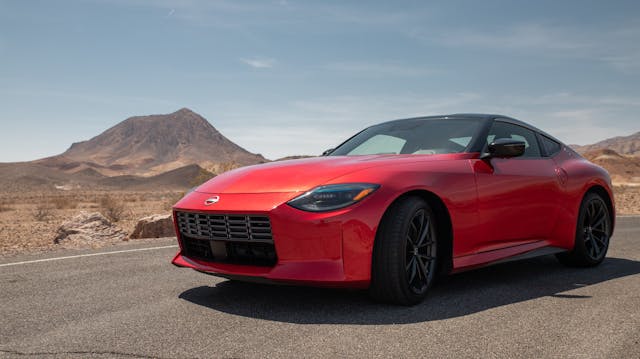
Nissan’s Z has had its ups and downs over the last 50 years. First introduced as the Datsun 240Z in 1970, it landed in North America as the Nissan 300ZX. Production lasted until 2000, along with sales in Japan, and then the Z took a three-year hiatus. The all-new 350Z was introduced in 2003, but the twin-turbo and 2+2 models were history. All Zs were now naturally aspirated with a 3.5-liter DOHC V-6, and they were all two-seaters. In 2009, the car received another redo and a larger 3.7-liter engine. The 370Z remains in production today, basically unchanged for the last 10 years.
Maserati Ghibli

A rival to the Ferrari Daytona, the original Maserati Ghibli was a sexy V-8-powered front-engine sports car. Designed by Giorgetto Giugiaro at Ghia, who went on to design the VW Golf, DeLorean, and Lotus Esprit, it featured pop-up headlamps, a 2+2 coupe and two-seat Spyder body styles. Production lasted from 1967–73. The name, which represents a wind in the Libyan desert, went dormant until the 1990s. Based on the Biturbo, the second-generation Ghibli, lasted from 1992–98. In 2014, Maserati brought the Ghibli back, this time as a turbo V-6-powered luxury sedan smaller than its Quattroporte. It remains in production today, essentially unchanged over the last half decade, but there’s a new twist on the horizon.
Pontiac GTO
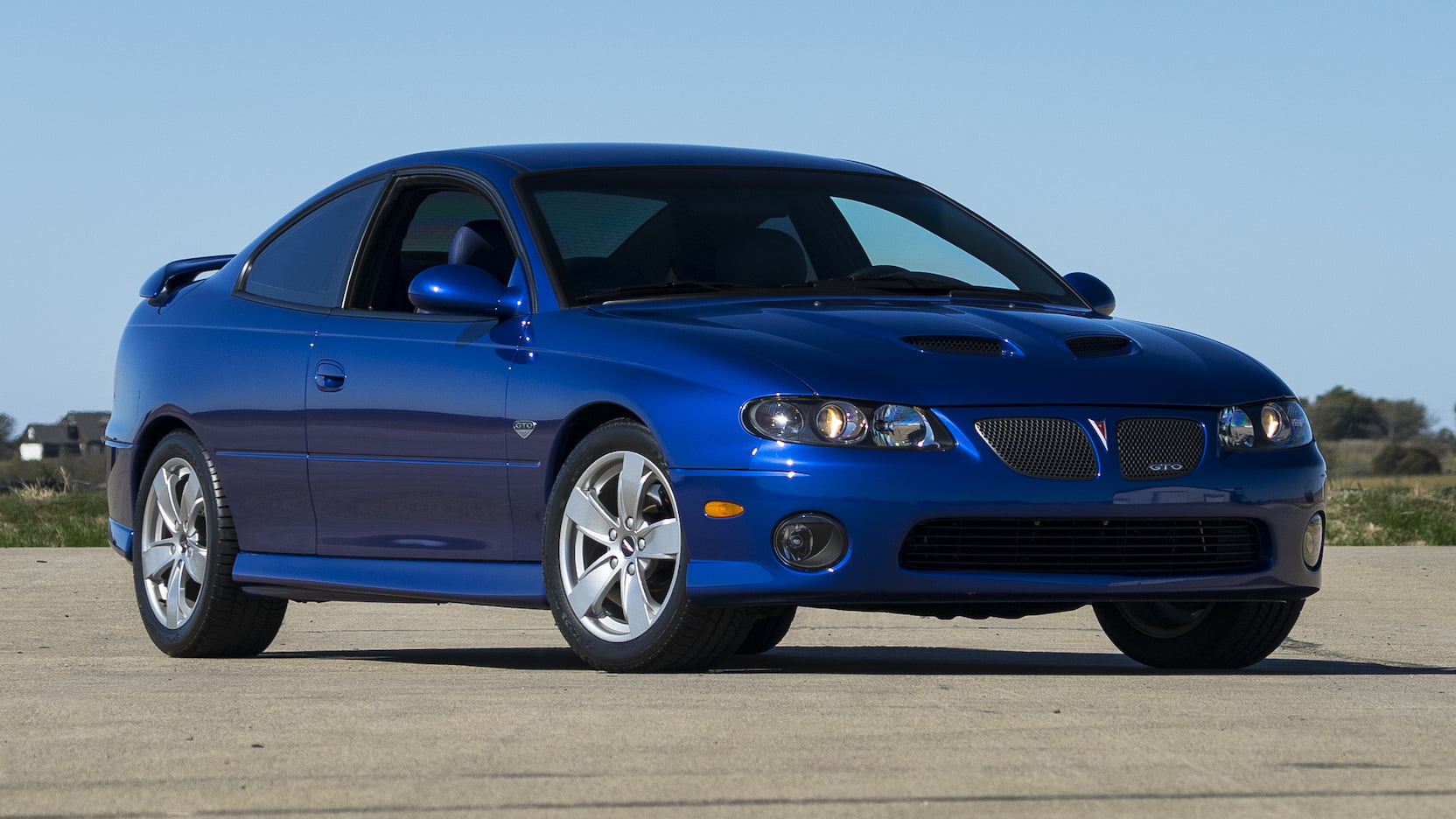
Few cars have had an impact on the market like the original 1964 GTO. Created by Pontiac’s chief engineer John DeLorean and his team, and brilliantly marketed by Jim Wangers, it single-handedly launched the original muscle car era. That era was short lived, however, and despite a few redesigns and four generations, GTO production would last only a decade. By the early 2000s, Pontiac was selling Azteks, and the brand was on its last legs. Even the Firebird had been killed off in 2002. In a last-gasp attempt to capture some of its old glory, in 2004, Pontiac threw GTO badges on the LS-powered, rear-wheel drive Holden Monaro from Australia and crossed its fingers. It didn’t really work. Sales lasted just three years and Pontiac was laid to rest in 2010.
Toyota Supra

Originally, the Supra was a more powerful and sportier version of the Celica. Always rear-wheel drive, it debuted in 1978 and lived successfully through two generations. Then in 1987, it became its own model, and for the first time Toyota added a turbocharger. The Supra Turbo was packing a 231-hp 3.0-liter inline-six and sales lasted until 1992. The following year, Toyota created a legend, the fourth-gen Supra, powered by its 2JZ inline-six. Both naturally aspirated and twin-turbo versions were available, with the boosted version packing over 300 hp. Tuners got to work, and eventually 1000-hp MKIV Supras with stock engine blocks weren’t hard to find. Unfortunately, sales in America lasted only five years. And now the Supra is back. Toyota has partnered with BMW to create the modern version, a two-seat coupe powered by BMW’s twin-turbo 3.0-liter inline-six rated at 335 hp. It’s a mechanical twin to the new BMW Z4 Roadster, and it’s one of the most anticipated new cars this year.
Volkswagen Beetle
20180404162504)
After more than 20 years and two generations, Volkswagen has discontinued its modern interpretation of the Beetle. This is, of course, the second time the Bug has gone bye-bye. The original Beetle, designed by Ferdinand Porsche in the 1930s, remained in production somewhere in the world from 1938–2003. Over 21 million were built, all rear-engined, all air-cooled. Sales of the original ended in the United States in 1979. The New Beetle was introduced 19 years later, based on the front-engine, front-wheel drive underpinnings of the VW Golf. It was successful enough to warrant a successor in 2012. The flower vase on the dash was gone, but the spirit was still there. The Final Edition, a trim level with the turbocharged 2.0-liter engine and diamond-stitched leather seats, is available now.
***
Check out the Hagerty Media homepage so you don’t miss a single story, or better yet, bookmark it. To get our best stories delivered right to your inbox, subscribe to our newsletters.
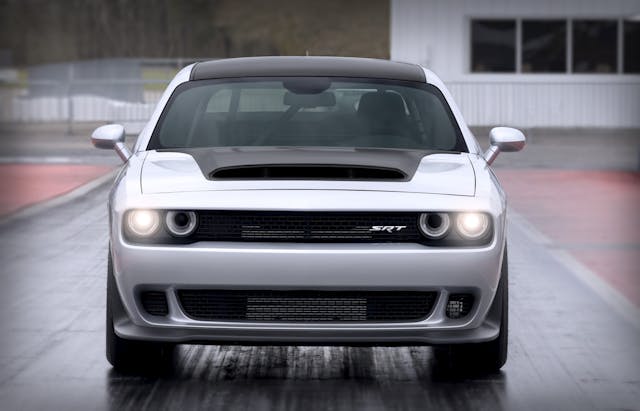

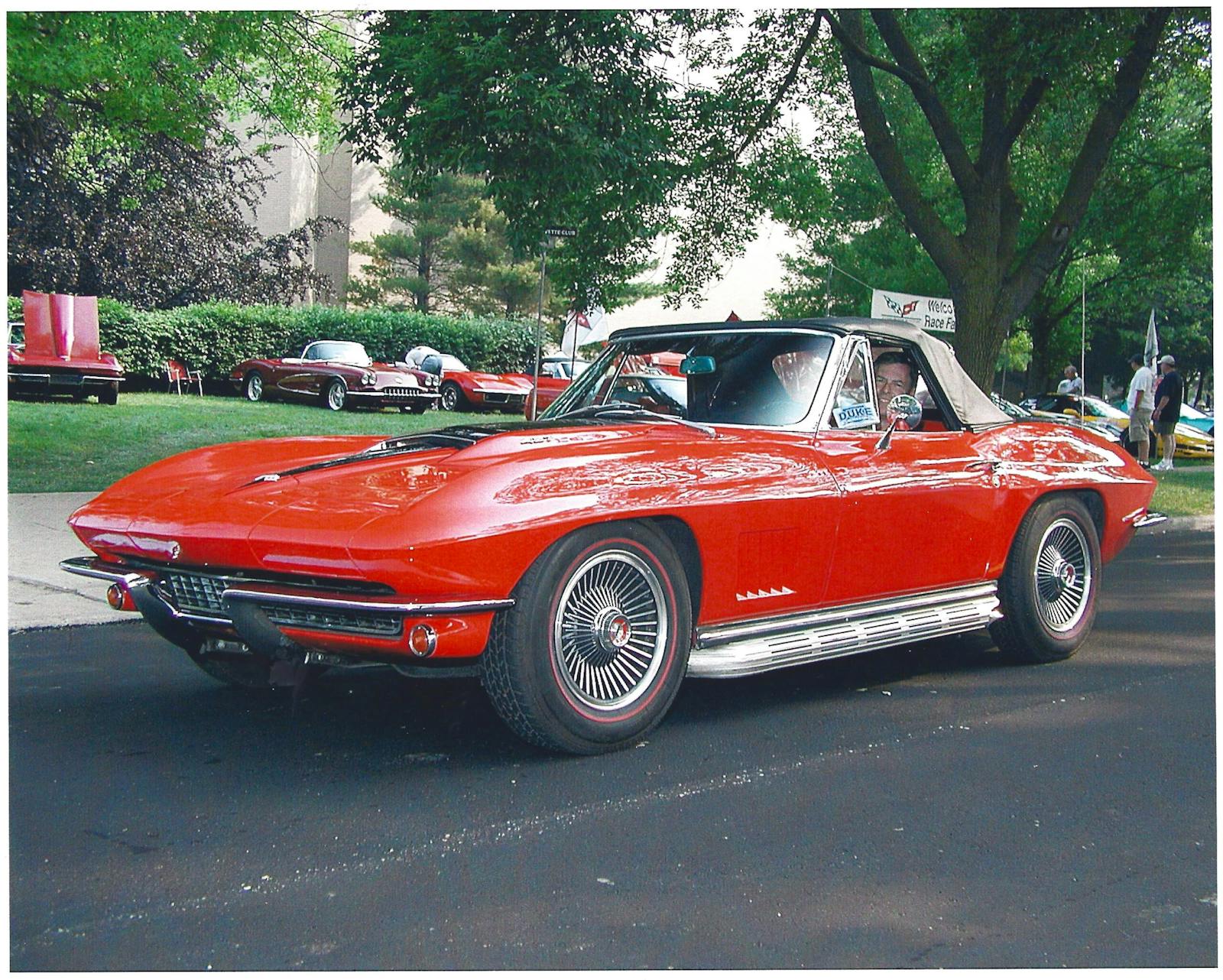
General proof that the Retro deal has run its course.
I get the retro deal. It was a safe move. But today it has been done into the ground. Time to create new looks and classics and new names.
Imagine if Harley Earl had just done retro cars for the Motorama’s? It is time again to start looking forward more and not back.
It is ok to carry some of the heritage like in the Vette in some parts of the styling but they all need to make a step forward.
The best Corvettes were the ones to make major changes forward. The C5 really moved the needle much just as the C8 and C2. They went new directions and made radical changes in not just styling but lay out of the drivetrains. This is how you live in the future.
This article is so old.
Agreed. Presented as new but seems to
Be a couple years old. Has picture of the new Z but doesn’t talk about it.
I like them all but a lot of that is due to the nostalgia they evoke collectively and personally. Having grown up around Chargers and the occasional Challenger, Camaro and Mustang, I’ve had a love of Mopar since I was little. When they brought back the Charger nameplate, I just HAD to have one! It wasn’t one of the bigboi V8s, but it was more than adequate and proved to be quite the road warrior. I had little in the way of issues, it was solid and dependable in the 10 years and 100k+ I put on it. When it came time for another car, I opted for a V8, but with another marque. Only because there are SO MANY of them out there nowadays. I wanted something I wasn’t going to see every day, at least not in the numbers I see Chargers and Challengers (and Camaros and Mustangs) out there. The next favorite for me is the Nissan Z. I’ve always loved them (since the days of the Datsun 280Z), but never got to own one.
A lot of errors in this article. Many cars are no longer in production
Where in this article does it say the resurrected nameplate cars are still in production?
The article said:
“Here are 17 classic nameplates that have come back from the dead. There are others, but these are some of the best, along with a couple of losers.”
My reading and comprehension of that statement finds nothing that claims any of the 17 classic nameplates are still in production. Only that the name plates have, at one time in the past, come back. So what are the errors you are referring to?
I was simply asking Ricky why he ASSumed the cars listed in the article were all still in production. I did read the whole article and there is nothing stating that the cars listed were, or were not, still in production. And as you have so eloquently stated, some are still in production while some are not.
As for trying to be a smartass, I don’t have to try, I am most certainly one.
Not just that, the 500 is already getting a second try in the US with just a full-EV version.
I get it’s a 2019 article but saying “It is reproduced here with minor changes for timeliness” without doing as such is confusing.
You got that right.
This is getting so freaking boring.
Why don’t we bring back Bell Bottoms, shag haircuts, and polyester. Enough of this retro BS already.
Here’s an old one that was before the more recent wave. 1962-79 Chevrolet Nova to the 1985-88 Toyota Corolla based Chevrolet Nova. It was a failure and insult for enthusiasts. Sometimes referred to as the “Toy-let” Nova. But it was a decent “basic transportation” vehicle to the non-enthusiast.
Later it was changed to the 1989-97 Geo Prizm and then again to the 1998-2002 Chevrolet Prizm.
To be fair, the use of the Nova name on the rebadged Corolla was a better outcome than had it been used on the Chevy X-body’s replacement, the 1980 FWD disaster Citation.
You couldn’t do much harm to the Nova name anyway. It was always pretty much just a Housewife’s car for trips to the supermarket.
Thanks for your opinion. Not accurate, but thanks anyway.
I once heard that the resurrected Toyota Nova was intended to be sold in europe until folks figured out that no va means ‘doesn’t go’ in a lot of languages over there
You heard wrong. The whole Nova means “No Go” is a myth. 100% false.
“Nova” (one word) is not the same as “No Va” (2 words) in Spanish. Just like the word “notable” is not the same as “no table”.
Great call! Lol.
Mini?
Yeah, how was the Mini missed? Good call, Randy
From a US perspective, the Mini was indeed resurrected, but the old one was still in production for other markets up until the “new” (BMW-owned) one launched in 2000.
Don’t forget the Mini, an absolutely wonderful car that was brought back in a vastly different version, only a mini in name, then they brought back the Cooper name as well. I owned two minis and one 998 cooper, and I loved them, but hated the “New Mini”. I actually felt I had more room in my original mini that I did in the New one even though it was much bigger.
I had a 1969 Austin MIni Cooper S i Nicaragua and the new is not close to be compare, I miss My MINI
I also had a 69 Cooper S and it was a lot of fun but at the time I was 20. I am now 71 and have a 2008 Mini Cooper which is more fun to drive and way more dependable. Also it is faster and has more room ion it.
I think many of us can agree the New Mini has been a success And as far as I know it’s still in production.
While a4 cylinder the 78 to 83 challenger it was REAR wheel drive! Definitely not the peppiest I found it to be fun to drive. ( My parents had a Plymouth Sapporo) the cousin to that generation of challenger.
Exactly right! I believe those were based on the old Colt RWD cars from the 70s, and were the basis for the next-to-come Conquest/Starion cars (before they were killed in favor of the FWD Stealth/3000GT); now THOSE were fun to drive! I believe all of them used Mitsubishi chassis.
My wife and I like the 2002-2005 two seater Thunderbird. Just a nice everyday driver with a decent size trunk and enough zip to keep up with freeway traffic. And easy to get parts for it since it’s based on the Lincoln LS.
At All Ford car shows here in the Phoenix area, there are usually several well kept examples on display.
Couple of corrections on the Fiat 500 segment: the first Fiat 500s were built in 1936 (the Topolino, best known in the US as a body donor for A-gasser dragsters in the 1960s). The Topolino continued in production until 1955, when it was superseded by the Fiat 600. The 500 Nuova was introduced in 1957; they were sold in the US at least up until 1961 or ’62, along with the Bianchina, basically a Nuova 500 with a sportier body.
Indifferent to all. Some good, some not, beauty and desire is the care takers choice.
Only comment is the Ford Mustang E is a turd stain on every Mustang prior, current, and future. My early GT fastback just went to new owner – happy for him. Happy for me, I’m out of Ford. Marketing could have named that E vehicle a Thunderbird, but!
It’s a finicky driver that ditches a vehicle they own simply because another model one does not like comes along using the same name. I guess I have a different perspective: buy the vehicle you like and don’t worry about the rest. I bought a Bronco because I liked it. The Bronco Sport doesn’t affect my enjoyment of the Bronco.
“That vehicle morphed into the Trailblazer in 2002, which was laid to rest with the introduction of the Traverse in 2009.” …. The Trailblazer came back in 2021 and is a Korean built small SUV between the Trax and the Equinox ……
Your fact is a side effect of with “minor changes for timeliness,” which should have been “with updates to reflect changes that have happened since the original article was written.” 🙂
I was so disappointed in the 2000’s GTO. I sat in one at the Detroit auto show at the cars release. The interior had too much cheap plastic. The silhouette reminded me of a Chevy Cavalier, and the wheels looked too small. The power was there, but not the emotion that would take me back to the 60’s or early ’70’s cars.
That should be a GM tagline – “the interior has too much cheap plastic”.
Theres good choices and bad bad choices here, here’s my highlight thoughts, the GTO, omg my heart was pounding, I even might not have thrown up over a LS powered Pontiac, that wasn’t a Pontiac so.. the Challenger, awesome vehicle, more awesomeness than the original, it stopped and steered, Fiat, loved it, 4 door Charger? Well y not everything else is 4 doors now, Bronco looks good, Blazer, nah, The Bug! Excellent, Mustang, what Pontiac should have done with the GTO, and built a Pontiac motor for it, how much laughing is gonna happen when you pop the hood of your Pontiac, and it’s really a Chevy?
The realities of the 2000 GTO. Building a Pontiac engine? By the time the car was released the LS was the only V8 GM had in stock and it was in the Pontiac G8 and Chevy SS as well. Lighter and more powerful than anything we had in the 60’s.
The Holden GTO/G8/SS will go down as the best unpromoted vehicles GM has made. Right up there with the re-birthed Camaro.
That’s GM’s version of taking the infant right after birth and placing it on a hill top. Some sort of Detroit mythology. If it’s good it will survive on it’s own!
It was the ultimate sleeper
Agreed. Pontiac had lost their way by the time the New GTO appeared. Had Pontiac given the Gto some resemblance To it’s original namesake it may have sold better.
Biggest problem as far as I was concerned is that it only came overloaded and overpriced. As a result I wasn’t interested.
You left out the Corvette “Stingray”.
There was never a C2 Corvette Sting Ray as an official Chevrolet model and the C3 Stingray was the same. There was a Corvette Coupe and a Convertible but no official Stingray/Ray. Neither term appeared on the window sticker or the Title. Stingray/Ray were a marketing terms and body labels. The Corvette Stingray first became an official model designation with the C7 in 2014 and continues with the C8. Therefore it was not resurrected. Nit Picked 🙂
I am really looking forward to seeing what Volkswagen is going to do with the IH Scout. haha
Dodge Dart, Chevy Impala, Chevy Malibu, Mercury Zephyr, Ford Taurus.
All cheap imposters.
Including the new Hornet